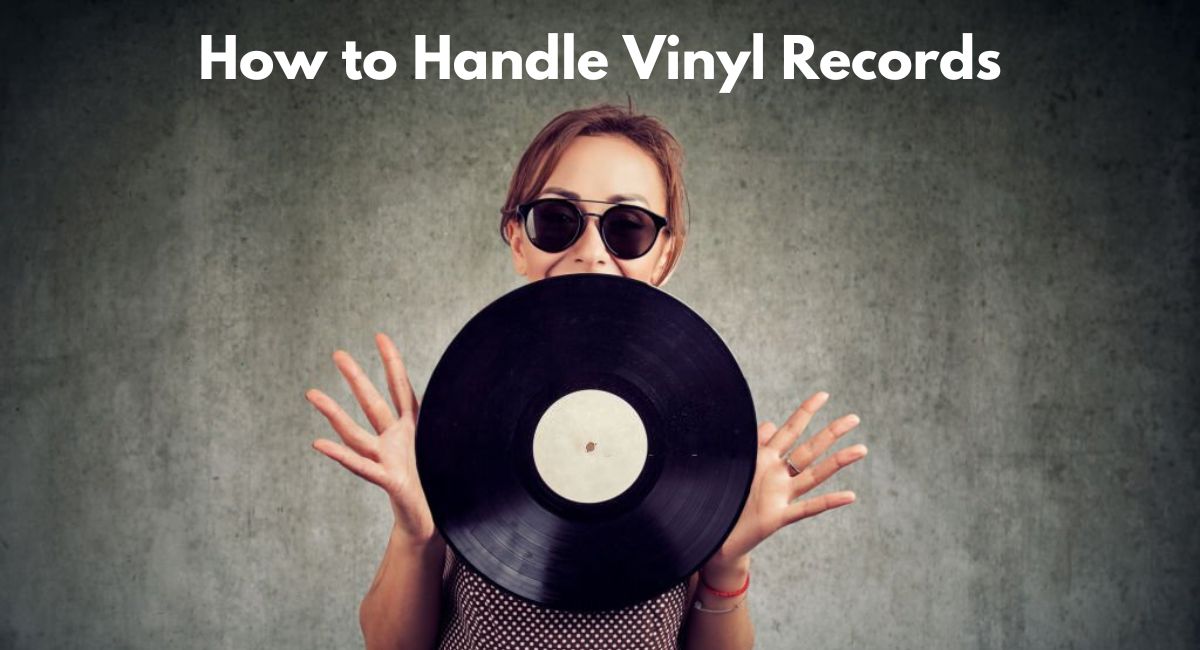Handling vinyl records may seem simple, but small mistakes can quickly turn your prized collection into a stack of scratched-up disappointments! I learned this the hard way. When I started collecting, I thought, “What’s the big deal?” But one greasy fingerprint ruined a rare record, and let me tell you, that was the wake-up call I needed.
Vinyl isn’t just music—it’s art, history, and a delicate piece of craftsmanship. Knowing how to handle records properly can keep your tunes sounding crisp and your collection in mint condition.
Let’s get into the nitty-gritty and make sure your records are treated with the care they deserve!
Contents
Why Proper Handling of Vinyl Records is Important?
If you’re like me, you probably had no idea how fragile vinyl records were when you started. I’ll admit it—I’d grab records by the grooves without a second thought. It wasn’t until I heard pops and crackles on playback that I realized those grooves are basically the heart and soul of the record. And guess what? Oils from your hands can mess them up big time.
Here’s what happens: fingerprints leave residue, which attracts dust and dirt. Over time, this grime gets pressed into the grooves, causing permanent damage. Scratches are another beast altogether. Even a tiny nick can create a skip that ruins your favorite song. The thing is, every time you mishandle a record, you’re shortening its lifespan. That’s why good habits matter.
Think of proper handling as an investment. If you want your collection to last decades (or even generations), you’ve got to treat each record like it’s a museum artifact. I’ve seen vinyl collectors cringe when someone grabs a record like it’s a frisbee—don’t be that person. Take the time to do it right, and your ears (and future self) will thank you.
The Right Way to Hold Vinyl Records
This one’s straightforward, but it’s amazing how many people get it wrong—my younger self included. The rule is simple: always hold your records by the edges. Never, and I mean never, touch the flat surface.
I remember one time at a party (bad idea to bring rare records to a party, by the way), someone grabbed a record from the middle and left a smudge that I couldn’t fully clean off. Lesson learned! Now, I’ve got a no-hands policy for anyone near my turntable.
Here’s how I do it: thumb on one edge, fingers on the opposite edge. If you’re worried about greasy hands, wear cotton gloves. Some folks think gloves are overkill, but trust me, they’re worth it if you’ve got an expensive collection. Also, keep your records off dirty surfaces. Use a sleeve or a clean, flat surface if you need to set one down.
Pro tip: Teach your friends and family how to handle records too. It’ll save you a lot of frustration down the line. Oh, and if you’re ever unsure, just remember—treat your vinyl like you’d handle a newborn baby.
Storing Vinyl Records Safely
Storage might not sound glamorous, but it’s a game-changer for record care. Back in the day, I stacked my records horizontally, thinking it saved space. Big mistake! Warping is real, folks, and once a record warps, there’s no going back.
To avoid this, always store your records vertically. Use a sturdy shelf or crate that provides proper support. I’m a fan of anti-static inner sleeves for added protection—they’re a little pricier, but they keep dust and static at bay. Plus, they’re smooth, so they don’t scratch the surface like some cheap paper sleeves do.
Another tip: keep your records in a cool, dry place. Heat and humidity are vinyl’s worst enemies. I learned this the hard way when I left a box of records in the attic. Let’s just say they didn’t make it. Direct sunlight is another no-go; it can warp records faster than you’d think. If you’re serious about preservation, invest in a record storage cabinet or box that’s designed for vinyl. It’s worth every penny.
Cleaning Vinyl Records Before and After Use
Cleaning records isn’t just about aesthetics. It’s about sound quality. A dusty record sounds dull, while a clean one pops—and not in the crackly way! I’ve gone down the rabbit hole of cleaning methods, and here’s what I’ve learned.
First, get a carbon fiber brush. It’s a lifesaver for removing surface dust. Use it before and after playing a record. For deeper cleans, you’ll need a cleaning solution and a microfiber cloth. I’ve tried homemade mixtures, but honestly, store-bought solutions are safer. Just avoid alcohol-based cleaners; they can damage the vinyl.
If you’re dealing with a really dirty record, consider an ultrasonic cleaning machine. They’re pricey, but they’ll make even the grimiest records shine. I splurged on one after rescuing some records from a thrift store, and wow, the difference was night and day.
Quick tip: Never use your shirt to wipe a record. It’s tempting, especially when you’re in a rush, but it’ll scratch the surface. Take the extra minute to do it right—your records will thank you.
Tips for Playing Vinyl Records Without Damage
Playing records seems simple, right? Just plop one on the turntable and press play. Not quite. If your setup isn’t right, you could be damaging your records every time you play them. Been there, done that.
First things first: check your turntable’s tonearm and stylus. If the tracking force is off, it’ll wear down your records and your needle. I learned this the hard way when my stylus started skipping on a brand-new record. Turns out, my tracking force was way too heavy.
Also, keep your stylus clean. Dust builds up quickly, and a dirty stylus can scratch your records. Use a stylus brush or a cleaning gel to keep it spotless. And remember, don’t play warped or dirty records. It’s tempting, especially if it’s a favorite album, but it’ll only make things worse.
Lastly, invest in a good turntable mat. It’s a small thing, but it makes a big difference. A quality mat reduces vibrations and protects the record’s surface. Think of it as an extra layer of TLC for your vinyl.
Conclusion
Handling vinyl records is part art, part science, and all about respect for the music. From holding them properly to storing and cleaning them, every step counts. Trust me, the effort is worth it. There’s nothing like the sound of a well-cared-for record spinning on the turntable—it’s magic.
So, start building good habits today. Your future self will thank you, and so will your records. Got any tips or stories about handling vinyl? Share them in the comments—I’d love to hear them!
Also read
How to Tell if a Record Is an Original Pressing?
How Is Music Stored on Vinyl Records?

I am Kenneth Haney, an unyielding audiophile and an ardent collector of vinyl records. My love affair with vinyl started at a young age of 15. As a teenager, I found myself enchanted by the distinct warmth and depth that vinyl brought to music. Unlike digital music, vinyl records carry a tangibility, a piece of history, an art that exists far beyond the confines of an MP3 file.
